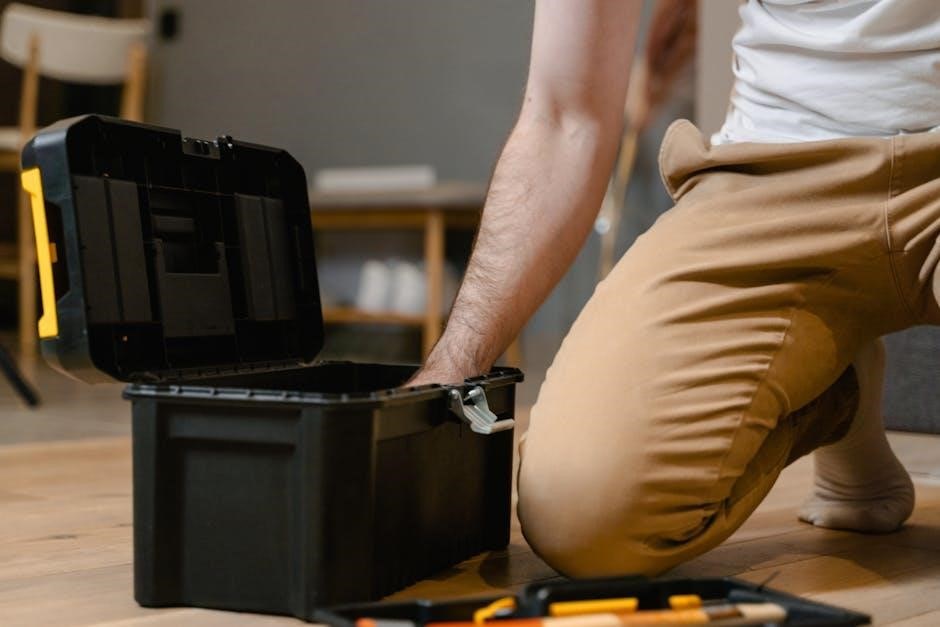is a manual defibrillator preferred for infants
Is a Manual Defibrillator Preferred for Infants?
When addressing suspected cardiac arrest in infants‚ the preference leans towards manual defibrillators. If a trained rescuer and a manual defibrillator are readily available‚ they should be prioritized.
Defibrillation is a critical intervention for infants experiencing cardiac arrest‚ aiming to restore a normal heart rhythm through controlled electrical shocks. Infants‚ defined as those under one year of age‚ require specialized considerations due to their smaller size and physiological differences compared to adults and older children. When an infant’s heart stops beating effectively‚ prompt defibrillation can be life-saving‚ but the choice between manual and automated external defibrillators (AEDs) becomes crucial.
Manual defibrillators offer greater control over the electrical dose delivered‚ which is particularly important for infants‚ as their smaller bodies require lower energy levels. Understanding the nuances of defibrillation in infants‚ including the appropriate energy settings and pad placement‚ is essential for healthcare providers and trained responders. The availability of a manual defibrillator and a skilled operator often dictates the preferred approach‚ balancing the need for rapid intervention with the precision required to minimize potential harm.
Manual vs. Automated External Defibrillators (AEDs)
Manual defibrillators and Automated External Defibrillators (AEDs) both serve the purpose of delivering an electrical shock to restore a normal heart rhythm during cardiac arrest. However‚ they differ significantly in their operation and capabilities. Manual defibrillators require trained personnel to interpret the patient’s electrocardiogram (ECG) and determine the appropriate energy level for the shock. This allows for customized treatment based on the infant’s specific needs.
AEDs‚ on the other hand‚ are designed for use by individuals with minimal training. They automatically analyze the heart rhythm and advise whether a shock is needed. While AEDs offer simplicity and ease of use‚ they may not always be suitable for infants‚ as the standard energy levels delivered may be too high. Some AEDs have dose attenuators specifically for infants‚ but these are not universally available. The choice between manual and AED often depends on the rescuer’s training and the availability of appropriate equipment.

When to Use a Manual Defibrillator for Infants
A manual defibrillator should be used on an infant if available‚ especially those under one year old. It allows for tailored energy delivery based on the infant’s condition.
Infants Under One Year Old
For infants less than a year old‚ the consensus generally favors the use of a manual defibrillator when available. This preference stems from the device’s ability to deliver precise and tailored electrical shocks‚ adjusted to the specific needs of the infant. Unlike Automated External Defibrillators (AEDs)‚ manual defibrillators allow healthcare providers to fine-tune the energy levels‚ minimizing the risk of delivering an excessive or insufficient shock.
When a manual defibrillator is not immediately accessible‚ an AED equipped with a dose attenuator is a viable alternative. The attenuator ensures that the electrical shock delivered is appropriate for the infant’s smaller size and lower body weight. Using an AED without a dose attenuator could potentially harm the infant due to the higher energy levels.
Trained rescuers should always opt for a manual defibrillator for infants under one year old to optimize treatment effectiveness and minimize potential complications. However‚ the immediate availability of any defibrillator is crucial in cardiac arrest scenarios.
Cardiac Arrest Scenarios
In situations involving suspected cardiac arrest in infants‚ the immediate response and equipment available significantly impact the outcome. When a manual defibrillator is accessible‚ particularly with a trained rescuer present‚ it should be the preferred choice. Manual defibrillators allow for customized energy delivery‚ crucial for the delicate physiology of infants experiencing cardiac arrest. This precision minimizes the risk of delivering inappropriate shocks.
However‚ in scenarios where a manual defibrillator is not immediately available‚ an Automated External Defibrillator (AED) becomes a valuable tool. If the AED is equipped with a dose attenuator‚ it’s even more suitable for infants‚ ensuring the electrical shock is within a safe and effective range. The attenuator adjusts the energy levels to prevent harm from excessive shocks.
Prompt action is vital in cardiac arrest scenarios. If a manual defibrillator is not readily accessible‚ utilizing an AED‚ especially one with a dose attenuator‚ is essential to improve the infant’s chances of survival. Quick intervention is key.

Advantages of Manual Defibrillators
Manual defibrillators offer capabilities beyond those of AEDs. Studies suggest a general advantage in utilizing them over automated devices. They allow trained professionals to customize the electrical shock according to the patient’s specific needs.
Capabilities Beyond AEDs
Manual defibrillators possess a range of capabilities that extend beyond the functionalities offered by Automated External Defibrillators (AEDs). One significant advantage lies in the ability of trained professionals to interpret complex cardiac rhythms displayed on the monitor. This allows for a more nuanced assessment of the infant’s condition‚ guiding the selection of the most appropriate intervention.
Unlike AEDs‚ which deliver pre-set electrical shocks‚ manual defibrillators enable clinicians to adjust the energy level based on the infant’s weight and specific clinical circumstances. This precision is crucial in minimizing the risk of tissue damage while maximizing the effectiveness of the defibrillation. Furthermore‚ manual defibrillators often incorporate advanced features such as pacing capabilities‚ which can be life-saving in cases of bradycardia or heart block.
Another key difference is the manual defibrillator’s capacity to perform synchronized cardioversion‚ a technique used to treat certain types of arrhythmias. AEDs typically lack this functionality‚ limiting their utility in these situations. The comprehensive monitoring and therapeutic options available with manual defibrillators make them invaluable tools in the hands of skilled healthcare providers.
General Advantages Over AEDs
Manual defibrillators offer several key advantages over Automated External Defibrillators (AEDs)‚ particularly in the context of infant resuscitation. The primary advantage is the ability of trained healthcare providers to interpret the infant’s electrocardiogram (ECG) and tailor the defibrillation strategy accordingly. This allows for precise adjustments to the energy level delivered‚ minimizing potential harm to the infant’s delicate tissues.
Unlike AEDs‚ which rely on pre-programmed algorithms‚ manual defibrillators enable clinicians to identify and treat a wider range of arrhythmias‚ including those not recognized by AEDs. This flexibility is crucial in complex cases where the underlying cause of cardiac arrest may not be immediately apparent.
Moreover‚ manual defibrillators provide real-time feedback on the effectiveness of each shock‚ allowing for immediate adjustments to the treatment plan. This continuous monitoring and adaptation are essential for optimizing outcomes in critically ill infants. In contrast‚ AEDs offer limited feedback‚ potentially leading to delays in appropriate intervention. The expertise and control afforded by manual defibrillators make them a preferred choice in settings where trained personnel are available.

When an AED is Acceptable for Infants
Automated external defibrillators (AEDs) are acceptable for infants experiencing suspected cardiac arrest if a manual defibrillator‚ along with a trained rescuer‚ isn’t immediately accessible. Prompt action is paramount.
Availability of Manual Defibrillators
The availability of manual defibrillators significantly influences the decision to use an Automated External Defibrillator (AED) on infants. Manual defibrillators are often the preferred choice‚ particularly for infants under one year old‚ due to their precision and adaptability in delivering customized electrical shocks. However‚ their presence is not always guaranteed in every emergency setting.
In situations where a manual defibrillator and a trained professional are readily available‚ they should be prioritized for infant resuscitation. Hospitals‚ ambulances‚ and specialized medical facilities typically have manual defibrillators accessible for immediate use. The expertise of healthcare providers allows for careful monitoring and adjustment of the defibrillation process‚ catering to the unique needs of the infant patient.
However‚ in scenarios where manual defibrillators are not promptly available‚ such as in public places or during transport‚ AEDs become a viable alternative. The absence of immediate access to a manual defibrillator does not preclude the use of an AED‚ especially when coupled with a dose attenuator designed for infants. The speed and ease of use of AEDs can prove crucial in time-sensitive emergencies.
AED with Dose Attenuator
When a manual defibrillator isn’t available for infants experiencing cardiac arrest‚ an AED equipped with a dose attenuator becomes a crucial alternative. These attenuators are designed to modify the electrical shock delivered‚ ensuring it is appropriate for an infant’s smaller size and physiology. Without a dose attenuator‚ a standard AED shock could be too powerful‚ potentially causing harm.
The dose attenuator reduces the energy output‚ delivering a lower‚ safer electrical current tailored for infants under one year old. This is essential because infants are more vulnerable to tissue damage from excessive electrical energy. Using an AED with a dose attenuator aims to balance the need for defibrillation with the imperative to minimize potential harm.
It’s important to note that while an AED with a dose attenuator is a valuable tool‚ it’s still considered a secondary option to a manual defibrillator administered by trained professionals. The precision and adaptability of manual defibrillation remain superior. However‚ when manual defibrillation is not immediately accessible‚ an AED with a dose attenuator significantly improves the chances of successful resuscitation in infants.

How to Use an AED on Infants
When using an AED on infants‚ ensure proper pad placement. If a manual defibrillator isn’t available‚ understanding AED operation is vital. There are fully automatic and semi-automatic AEDs‚ differing in shock delivery.
Proper Pad Placement for Infants
When using an Automated External Defibrillator (AED) on infants‚ proper pad placement is crucial for effective defibrillation. Due to the smaller size of an infant’s body‚ standard adult pads are not suitable and can lead to electrical arcing or ineffective shock delivery. Pediatric pads or dose attenuators are recommended to reduce the energy delivered to the infant’s heart.
The ideal pad placement for infants involves an anterior-posterior approach. One pad should be placed on the center of the infant’s chest‚ and the other pad should be positioned on the infant’s back‚ between the shoulder blades. Ensure that the pads do not touch each other‚ as this can cause the electrical current to bypass the heart.
If pediatric pads are unavailable‚ adult pads can be used‚ but extreme caution must be taken. Ensure the pads are placed as far apart as possible on the infant’s chest and back‚ avoiding any overlap. Regularly check for skin burns during and after defibrillation. Always prioritize using a manual defibrillator when available‚ as it allows for more precise control over energy delivery based on the infant’s weight and condition.
Automated vs. Semi-Automatic AEDs
When considering Automated External Defibrillators (AEDs)‚ it’s essential to understand the distinction between fully automatic and semi-automatic models. The primary difference lies in how the electrical shock is delivered. In a semi-automatic AED‚ the device analyzes the heart rhythm‚ determines if a shock is necessary‚ and then prompts the user to press a button to deliver the shock. This allows the responder to ensure that no one is touching the patient during the shock delivery‚ enhancing safety.
Conversely‚ a fully automatic AED analyzes the heart rhythm and‚ if a shock is required‚ delivers it automatically without any user intervention beyond turning on the device. While this may seem faster‚ it removes the crucial step of ensuring patient safety before the shock. For infant use‚ a semi-automatic AED is generally preferred.
The added control allows for a final safety check. Regardless of the type‚ always use pediatric pads or a dose attenuator when available to reduce the energy delivered to the infant‚ minimizing the risk of tissue damage. Manual defibrillators are still preferred.
